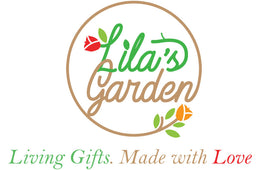
The debate between choosing preserved versus fresh plants is not just a matter of personal preference but encompasses a broader discussion on sustainability, aesthetics, maintenance, and cost-effectiveness. This comprehensive comparison aims to shed light on the pros and cons of each, helping you make an informed decision that aligns with your lifestyle, values, and decor needs.
Preserved vs. Fresh Plants: A Comprehensive Comparison
Understanding Preserved and Fresh Plants
Before diving into the comparison, it's essential to understand what each category entails. Fresh plants are living plants that continue to grow and require water, sunlight, and care to thrive. They can range from indoor potted plants to outdoor garden varieties. Preserved plants, on the other hand, are real plants that have been treated through various methods to maintain their appearance and texture for extended periods without the need for water, sunlight, or ongoing care.
Aesthetic Appeal
Fresh Plants
The undeniable beauty of fresh plants lies in their vibrant colors and the natural, ever-changing aesthetic they bring to a space. They can transform any area, making it feel more alive and welcoming. The dynamic nature of growing plants, with new leaves and blooms, provides a sense of progression and change.
Preserved Plants
Preserved plants offer a consistent look that can be perfect for spaces needing a certain aesthetic without change. They are particularly useful in designs where maintaining specific color schemes or shapes is crucial. The preservation process can sometimes enhance the plant's color, making it more vibrant than its fresh counterpart.
Maintenance and Care
Fresh Plants
The primary drawback of fresh plants is their maintenance requirement. Regular watering, appropriate lighting, and the right temperature are crucial for their survival. Some people find the care process therapeutic, while others may see it as a daunting task.
Preserved Plants
Low maintenance is one of the most significant advantages of preserved plants. They require no watering, sunlight, or specific temperature conditions, making them an excellent choice for busy individuals or places where natural light is scarce. However, they do need to be kept dry and may require occasional dusting.
Sustainability and Environmental Impact
Fresh Plants
Fresh plants are often seen as more sustainable due to their ability to improve air quality and reduce carbon dioxide levels. They can be composted at the end of their life, returning nutrients to the earth. However, the environmental impact of transporting fresh plants, especially exotic varieties, can be significant.
Preserved Plants
The preservation process involves the use of chemicals, which can raise concerns about environmental sustainability. However, preserved plants last much longer than fresh ones, reducing the need for frequent replacements. This longevity can mitigate their initial environmental impact over time.
Cost-Effectiveness
Fresh Plants
Initial costs for fresh plants can be lower than preserved ones, but the ongoing care, including water, fertilizer, and potential replacement costs, should be considered. Some fresh plants can also be propagated at no additional cost, offering more value over time.
Preserved Plants
Preserved plants often have a higher initial cost due to the complex preservation process. However, considering they require virtually no maintenance and have a long lifespan, they can be more cost-effective in the long run for those who prefer a set-and-forget approach to plant decor.
Health Benefits
Fresh Plants
Beyond their aesthetic value, fresh plants offer health benefits, including improving air quality, reducing stress, and increasing productivity. The psychological benefits of caring for living plants cannot be understated, offering a sense of accomplishment and connection to nature.
Preserved Plants
While preserved plants do not offer the same air-purifying benefits or psychological effects as their living counterparts, they can still enhance mental well-being by beautifying spaces and providing a natural aesthetic. For those with allergies to pollen or certain plant soils, preserved plants can be a great alternative.
Conclusion
The choice between preserved and fresh plants ultimately depends on individual preferences, lifestyle, and the specific needs of the space in question. Fresh plants are unbeatable for those who enjoy gardening and the benefits of living greenery. In contrast, preserved plants offer an excellent low-maintenance alternative that retains natural beauty without the upkeep.
Regardless of your choice, incorporating plant life into your environment can significantly enhance your living or working space's aesthetic, emotional, and physical well-being. Whether you lean towards the lush, vibrant presence of fresh plants or the durable, effortless charm of preserved ones, both options carry the profound ability to transform any area into a more inviting and harmonious space.
The perk of preserved flowers is that you can buy preserved flowers in Sydney online and get them delivered to your house, ready to be displayed or gifted to your loved ones. Flowers are a great symbol of celebration, whether it is for a graduation, a birthday, or just simply because you want to have floral decor around your house, Lila’s Garden can help you. Our team at Lila’s Garden is highly skilled and trained in our floral services and can present to your wide range of beautifully crafted preserved flowers. Lila’s Garden offers our services online so you can buy the preserved flowers online in Sydney here.
